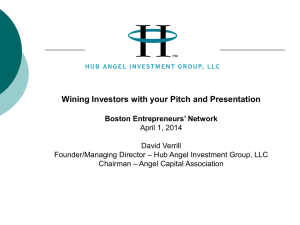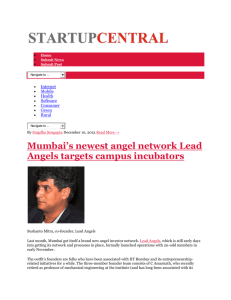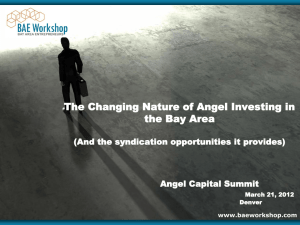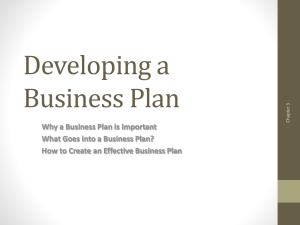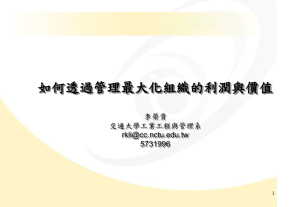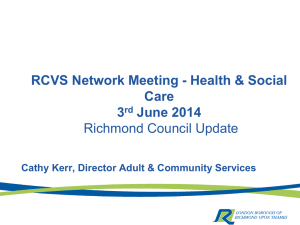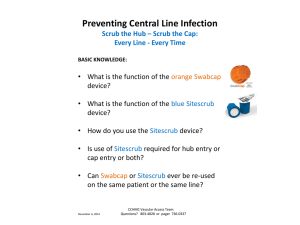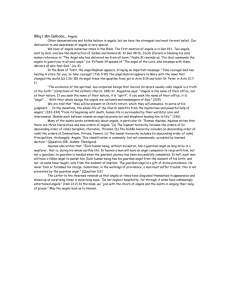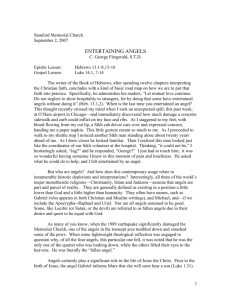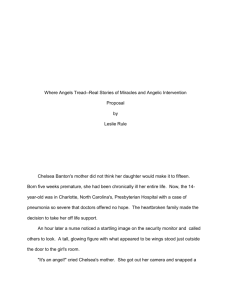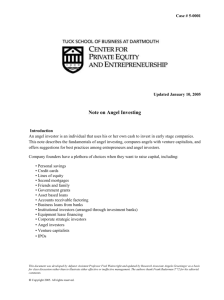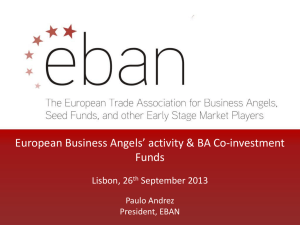Innovations to strengthen the electronics and communication
advertisement
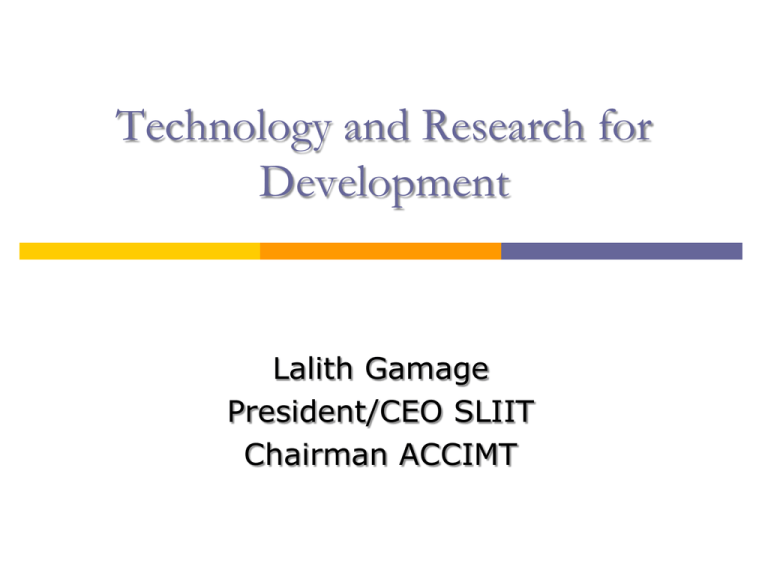
Technology and Research for Development Lalith Gamage President/CEO SLIIT Chairman ACCIMT Sri Lanka’s Vision Double our GDP to $4000 by 2016 IT/BPO Industry - $ 2 billion by 2016 and 100,000 professionals Tourism Industry - $ 3 billion by 2016 and 500,000 employment Mahinda Chinthanaya - Accelerate Research and Development to establish 5 Hubs by 2020 Aviation hub, Maritime Hub, Commercial Hub, Energy Hub, Knowledge Hub Man Power Contribution Manpower Contribution R&D Professional Skills US$ 0.5mn Semi Skilled US$ 3 bn Unskilled US$ 5 bn IT Industry: Case Study Insignificant in the late 1990s early 2000s Embarked on an Eco-system (Cluster) based approach Manpower Infrastructure Business and legal environment Marketing and Image Building Centres of Excellence (R & D) Competitiveness Strategy • Address Issues (Create the Environment) • Build Confidence (Make it Competitive) • Create Competence (Sustain Competitiveness) • • • • • Infrastructure Education & Training Business Environment Legal Issues Marketing & Image Building • • • • Quality Innovativeness Strengths/Niche Skills • Centers of Excellence • Business Incubators • Research and Development IT Industry: Case Study Today IT industry is one of the fastest growing industries 5th Largest export earner for the country Annual exports are worth around $400 million Aims to earn $2 billion by 2016 Ranked 16th in 2009 Addressable market is around $350 billion Success is due to collective efforts of Universities/Institutes – developed and offered the relevant programs and carry out research Infrastructure providers – Private sector understood the industry requirements and service levels and increased capacity ICTA – policy, research on requirements SLASSCOM – promotes research, centres of excellence Industry – provides placements, scholarships, funds research, curriculum dev. Technology and Research for Development Technology and Research as an enabler Product Improvement Process Improvement Compare IT industry Build competitiveness, Efficiency Developing Research as an Industry Research and innovation to build new companies New Products Challenges Industry is not geared to seeking R & D expertise from research institutions R & D institutions carry out their research without placing emphasis on economic and/or social value creation Lack of Eco-system based R & D Industry Entrepreneurs Investors R & D Institutions Challenges Lack of entrepreneurial culture in the research community Lack of mechanisms to encourage innovation, commercialization of research Business plan competitions Incubators Non availability of well established Angel and VC funds Inability to recruit and retain best and the brightest due to poor compensation Overcoming Challenges Industry, Research Institutions, Government Interaction – Marketplace Development of Eco-systems Mechanisms for commercialisation Industry clusters – Electronics, Biotechnology, Nanotechnology Centres of excellence Industry liaison cells Entrepreneurship training Business plan development concepts Establishment of funded research chairs Research to Business (Plan) What is The Product/Service? What Technological/Innovative Developments? Will there be any Intellectual Property? How do you obtain technical input? – Technical Team Market Scope? Key attributes of the target market (size with segmentation, buying criteria, behaviour, etc.)? What are the market trends and why? How will you build your market? Market Need? Why will customers purchase your Product/Service? Distribution Channels How or who will sell the Product/Service? Research to Business (Plan) Competitive Situation Management Capacity Why will your product/service "beat" the competition? Barriers to competition Patent or copyright protection Time to engineer a new product Highlight the key credentials of the management team What key skill sets are required? Does management regularly consult with market-based advisors or experts? How? Financial How will your revenue model enhance market acceptance in the target market? How are you going to price your service/product? How much money is required? Business/Product Development Process Research Institution Research Outcome Entrepreneur Funds Product Prototype Marketable Product Business/Product Development Process Research Institution Research Outcome Entrepreneur Funds Product Prototype Marketable Product Amount of Capital Source of Capital Public Markets Founders, Friends and Family Govt. Angels Venture Capital Angel Funds Strategic Investors Age of Company What Investors Want Groundbreaking Technology World-class Product Revolutionary Business Model Empowered Team Visionary/Renowned Board Attractive Return 3 I’s: Intensity, Integrity, Immediacy 3 G’s: Goodness, Greatness, Greed Angels Vs VCs Angels Fun, Interesting Opportunity, A willing protégé 10 investments of Rs. 2.5M each = Rs.25M 1 big payout in 5 years, 50 x Rs.2.5 = Rs. 125M VCs 10 investments of Rs. 25M each = Rs.250M 2 big payouts in 3-5 years, 10 x 2 x Rs.25M = Rs. 500M Cap Table (Ideal) StartUp Founders/ Mgmt $~0 (100%) Angels Angel Round VC Round $~0 (75%) $500K (25%) VCs Market Cap $~0 $2M Exit Gain $~0 (60%) $60M 1000X $500K (20%) $20M 40X $2M (20%) $20M 10X $10M $100M Cap Table - Sri Lankan IT Company StartUp Founders/ Mgmt Rs.~0 (100%) Angels Angel Round Rs.~0 Exit Gain Rs.~0 (75%) Rs.~0 (60%) Rs.300M 1000X Rs. 2.5M (25%) Rs.2.5M (20%) Rs.100M 40X Rs.20M (20%) Rs.100M 5X Rs.100M Rs.500M VCs Market Cap VC Round Rs.10M Incubating Success Incubator Features Access to Infrastructure Access to People Access to Funds Access to Right Environment Access to Infrastructure A/C Space Dedicated Internet Services Quality Regulated Power Communication Facilities Office Furniture and Equipment Secretarial services Financial Services Access to Human Resources & Funds Technical Experts Researchers Developers Students Business Analysts Strategists Venture Capital Business Plan development to seek funds from other sources Access to Right Environment Entrepreneurship Training – Seminars, Workshops Technical Training Business Skills Development – Monitoring and Mentoring Marketing of Resident Companies Market Plan Formulation Marketing through known contacts Networking with Global Companies Linking up with Universities and Industry Consulting on strategies at various stages: Launch, Growth and Harvest of businesses. Way Forward Technology and Research are essential for our country’s development Develop R & D as an enabler and to create new companies Need to address the issues such as Industry – Research Institution Interaction Capacity Building of Research Institutions Funding Sources Entrepreneurial culture development Mechanisms for Commercialisation Development of a Eco-system (cluster) based approach to R & D Thank you

